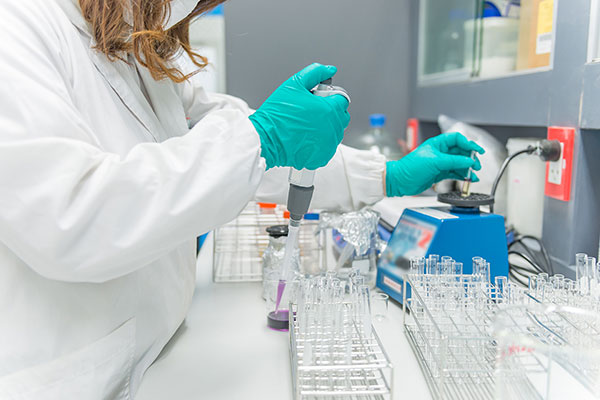Fluorescent Probes
- Cell and Organelle Stains
- Ion Fluorescent Probes
- Metal Fluorescent Probes
- NO & ROS Probes
- pH Indicators
Customized Fluorescent Reagents
One-stop Solution for Your Research
BOC Sciences offers a one-stop solution for fluorescent reagents, providing custom synthesis, modification, and large-scale production services. Our comprehensive portfolio includes high-purity fluorescent dyes, probes, and labeling reagents for research and industrial applications, ensuring superior performance and reliability.
Explore More

Background
Introduction
Fluorescent probes are a kind of fluorescent molecules with characteristic fluorescence in the UV-visible-near infrared region, and their fluorescence properties (emission and excitation wavelength, intensity, polarization, lifetime) could be sensitively changed with the properties of the environment, such as polarity, refractive index, viscosity and so on. They can combine with biomacromolecule such as amino acids, proteins, peptides and DNA in covalent bonds or other forms to form fluorescent complexes or polymers. Fluorescent probes are also a kind of fluorescent chemical sensors. They are the "molecular devices" that convert biological and chemical events into fluorescent signals that could be analyzed.
Structure
A fluorescent probe is mainly composed of three parts, includes the reporting group, the recognition group and the connecting group.
The reporter group is the most basic component of the fluorescent probe. The function of the reporter group is to express the molecular recognition information which can be used as a fluorescent signal. In the fluorescent molecular probe, the fluorophore reflects the molecular recognition function of the micro world by giving information such as the enhancement and weakening of fluorescence intensity and the shift of fluorescence peak wavelength.
The recognition group in the fluorescent probe, also known as the receptor part, is the main part of the molecular recognition function of the probes. It determines the sensitivity and selectivity of the binding between the fluorescent probe and the guest. The relationship between the size of the recognition group hole and the guest is the primary standard of selective molecular recognition. In addition, the number of coordination sites and the coordination number of the guest contained in the recognition group, as well as the type of ligand, the acidity and alkalinity of the ligand will also affect the selectivity. The recognition of the guest by the recognition group is not limited to metal cations, but also involves anions and neutral molecules.
The linking group connects the reporting group and the identifying group. Whether the connecting group is appropriate or not will directly affect the generation of output signal.
Application
- In industry, fluorescent probes can be used to determine the content of impurities in castings, so as to control the quality of products.
- In agriculture, fluorescent probes can be used to check the purity of agricultural products, identify the viability of seeds, detect the deterioration of agricultural products as soon as possible, judge the maturity of fruits and diagnose crop diseases and pests. In addition, fluorescent probes can also be used to detect the content of pesticides.
- In biochemical research, fluorescent probes can label antigens, antibodies and nucleic acids, detect the active sites of proteins, study the damage and repair of DNA base pairs and the chemical reaction activity of drug molecules, and complete the qualitative, quantitative and structural research of biological compounds.
- In inorganic analysis, the elements to be measured in inorganic compounds interact with organic reagents, and the complexes combined with fluorescent probes can emit fluorescence of different wavelengths under ultraviolet light, so as to determine the content of elements to be measured.
Resources

- Hoechst Dyes: Definition, Structure, Mechanism and Applications
- Mastering the Spectrum: A Comprehensive Guide to Cy3 and Cy5 Dyes
- Fluorescent Probes: Definition, Structure, Types and Application
- Fluorescent Dyes: Definition, Mechanism, Types and Application
- Coumarin Dyes: Definition, Structure, Benefits, Synthesis and Uses
- BODIPY Dyes: Definition, Structure, Synthesis and Uses
- Cyanine Dyes: Definition, Structure, Types and Uses
- Fluorescein Dyes: Definition, Structure, Synthesis and Uses
- Rhodamine Dyes: Definition, Structure, Uses, Excitation and Emission
- Unlocking the Power of Fluorescence Imaging: A Comprehensive Guide
- Cell Imaging: Definitions, Systems, Protocols, Dyes, and Applications
- Lipid Staining: Definition, Principles, Methods, Dyes, and Uses
- Flow Cytometry: Definition, Principles, Protocols, Dyes, and Uses
- Nucleic Acid Staining: Definition, Principles, Dyes, Procedures, and Uses
- DNA Staining: Definition, Procedures, Benefits, Dyes and Uses
- Cell Staining: Definition, Principles, Protocols, Dyes, and Uses
- Ion Imaging: Definition, Principles, Benefits, Dyes, and Uses
- Fluorescent Labeling: Definition, Principles, Types and Applications
Online Inquiry

